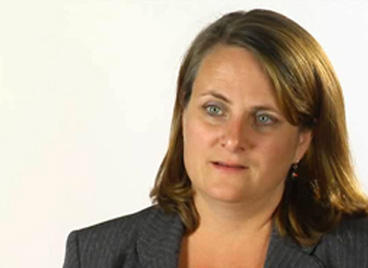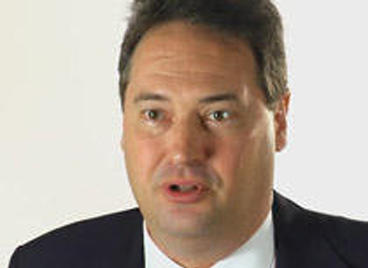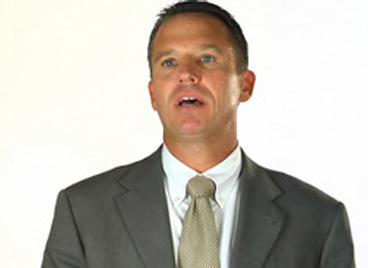Hear What Our Clients Have To Say
By outsourcing the service, not only does it reduce the burden on the staff, but it also brings a whole new level of independence to the process.
William Mencia, MD
Accredited Provider OrganizationThe value of an external review process provides a level of independence that I would never be able to accomplish if I were to rely purely on an internal review or monitoring process.
Maureen Doyle-Scharff, MBA, FACME, CCMEP
Commercial Supporter OrganizationWe find great value and validity in engaging CME Peer Review experts in that they actually are in clinical practice and have a greater opportunity and ability to detect something subtle in a bias perspective that we may not.
Michael Lemon, MBA
Accredited Provider OrganizationCME Peer Review provided me with a different perspective on an activity that our company was developing, so that it helped to broaden the content and really strengthen the educational value of the activities.
Kurt Boyce
Accredited Provider OrganizationWe provide an annual conference with over 70 individual sessions – each of which has to be individually peer reviewed. CME Peer Review worked with us to have over 70 activities reviewed, and they had a network large enough and experienced enough to accommodate our needs.
Ann Marie Dematteo,
Accredited Provider OrganizationOur primary reason for choosing CME Peer Review is because there is trust there. We’ve developed a very significant relationship… they are a true partner to all of our programs. We do not do any educational programs that we are accrediting without them as our partner.
Matt Frese, MBA
Accredited Provider OrganizationWe have been using CME Peer Review for years for a number of reasons. One is the quality of their reviews and their reviewers… their reviews are very thorough. They look at ACCME regulations, FDA regulations, so I know what I get back gives me a very robust review.
Sandy Bihlmeyer, MEd, CCMEP
Accredited Provider OrganizationThe information we get back from CME Peer Review really is useful to corroborate our own audits… and it gives us information to share with our funders and our faculty… and it makes more significant the independence of the program.
Stephen Lewis, MA, CCMEP
Accredited Provider OrganizationTime is a major factor in doing an internal review. Your staff needs to take time out of their workday to locate an appropriate reviewer who can fulfill the review in the time period that you need… when you outsource that component, the work is done for you and your staff can stay focused on the activities.
Audrie Tornow, CCMEP
Accredited Provider Organization


















Featured Client Case Studies
Case Studies
The accredited provider was notified by the Accreditation Council for Continuing Medical Education (ACCME), via a Letter of Inquiry, stating that a complaint had been filed against a specific CME activity. It was reported that the complainant perceived that the activity was noncompliant with the Standards for Commercial Support, specifically Standard 5: content without commercial bias.
The ACCME required the accredited provider to complete an objective content review of the activity using two content experts, who were not involved in the planning, implementation, or evaluation of the activity. The results of the independent reviews were to be summarized and submitted to the ACCME.
Key: Independent Review
The client, an accredited national professional organization of physicians, anticipated they would be able to create and implement a content review plan for 70+ CME programs to be held at their national conference. They expected to complete this task within 2 weeks from the time the content was received from faculty. The provider quickly realized that they did not have the internal resources necessary to develop, organize and manage the content review process on this large of a scale within this short time-frame. This resulted in the need for external resources to assist in this effort, to include the content review process.
Key: Vast network of clinical experts in many specialty areas
The client, a non-profit specialty organization, was evaluating their annual CE meeting through online attendee evaluation forms, and even though the feedback they received from their attendees indicated that the conference was meeting its educational objectives and was free from commercial bias, they felt strongly that the conference should also be evaluated by an independent group of individuals and that an independent review would reinforce these findings and enhance confidence.
Key: Independent Turn-key Solution
A large patient education website, was about to be launched when the client realized the need for content validation. The website included articles that spanned the spectrum of health – fitness and nutrition, conditions and disease states.
Key: Customized Solution
The client, a large specialty society, develops numerous professional resources including clinical practice guidelines, position statements and health policies. The large number of activities produced, combined with limited staff time and expertise caused a concern over the possibility of missing potential conflicts of interest that would pose both legal and regulatory risks, as well as damage to their excellent reputation for producing high quality educational products and services that are free from conflict of interest (COI) and/or commercial bias.
The client reviewed their existing COI procedures and determined that their entire COI review process needed to become much more robust in order to assess, manage and mitigate potential risks.
Case Studies
The client needed objective data to demonstrate to senior leadership that the policies and procedures for determining grant funding did not introduce any commercial bias or influence into those programs and activities. Furthermore, they needed to demonstrate that the resulting activities were also free of commercial bias.
Key: Identification of Bias
The client was under a CIA as a result of the actions of a company which they acquired a few months prior. The CIA required the company to provide documentation to regulators demonstrating that their non-promotional CME grant process and subsequent funded activities were free of commercial bias.
Key: Objective Data
The client was experiencing a lack of consistency between the original grant proposal and the final outcome of the grant-funded activity. For example, the provider promised to achieve certain objectives, yet some objectives were only partial fulfilled or not fulfilled.
The ability to conform to the grant proposal was important to the client to reconcile the appropriate use of the grant funds and also to make decisions about providing future grant funding to certain providers who did not deliver on their promises without adequate and reasonable explanations.
Key: Designing Customized Solutions
A national therapeutic expert in cardiology was asked by a professional society to contribute slides to their web-based slide library used by their members. It became known to the client that some of the slides he provided appeared to be biased towards that companies’ product to treat hypertension. The therapeutic expert received no financial support from the company to create the slides, however, the professional society received an educational grant from the company to help maintain their slide library. To complicate matters, the client learned that this expert was scheduled to present a CME symposium in 3 days at that societies’ annual conference that was supported by the client through an educational grant. Fearing the expert would use the slides and the client would be perceived to have worked with the expert to create the slides, the client quickly sought expert outside help to avert a potential crisis and mounting criticisms regarding lack of independence between a faculty member, a CME provider and a commercial supporter.
Key: Fast response
The client wanted to continue to provide detailed Request for Proposals (RFPs) on their grant website to enable CME providers to submit proposals which were in line with their grant funding criteria, however, they were concerned that this process might be introducing bias or somehow inappropriately influencing the content of the grant activities. The client sought the help of outside experts to resolve and mitigate this potential risk.
Key: Flexibility








